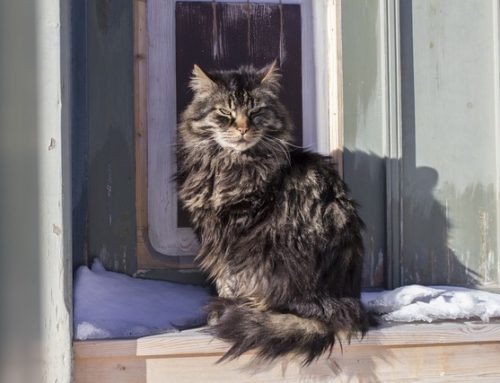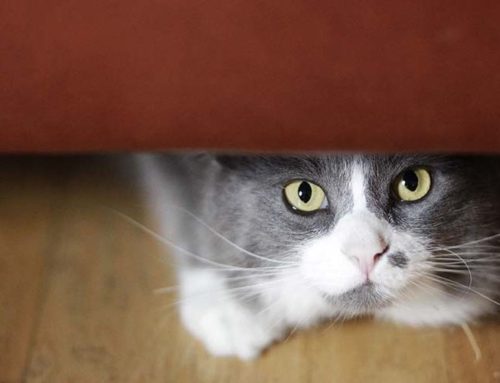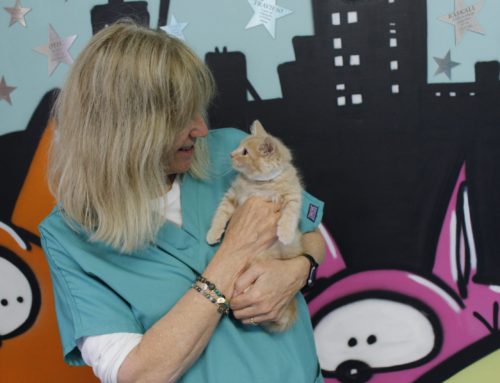 Mange is a very common issue with feral and stray cats. We frequently see cats coming into our clinic with varying degrees of mange. To the novice trapper, this skin disease can look pretty alarming. However, our seasoned veterans know this is a very treatable disease, and while it’s uncomfortable for the cat, it can get turned around with a little extra care and attention.
Mange is a very common issue with feral and stray cats. We frequently see cats coming into our clinic with varying degrees of mange. To the novice trapper, this skin disease can look pretty alarming. However, our seasoned veterans know this is a very treatable disease, and while it’s uncomfortable for the cat, it can get turned around with a little extra care and attention.
Mange is caused by a parasite, or a very small bug. These parasites actually live and feed on the cat, who acts as a “host”. The mites either live topically on the cat or they burrow under the skin.
Mange generally strikes the old and the young the hardest, although cats of all ages can get it. Mange is contagious to other animals and opportunistically to humans. Animals in poor health and with poor diet are more susceptible to it and symptoms can be more exacerbated.
Most common types of mange:
The two most common types of mange found in cats, especially stray and homeless cats, are:
Otodectic mange – This is otherwise known as ear mites. These are tiny, crab-like bugs that live and feed on top of the cat’s skin, mainly in the ear canals. When cats have ear mites, you’ll notice red, inflamed ears, the inner ears will look very dirty and you may notice an abnormal odor. You’ll notice the cat shaking his head and rubbing at his ears a lot. Sometimes the ears will even get a crusty, black discharge or may be a bit weepy from secondary infections due to the mites.
Ear mites are highly contagious between cats and also to other kinds of pets. They can quickly spread between cats, dogs, rabbits and ferrets.
Notoedric mange – This type of mite burrows into the cat’s skin to live and lay eggs there. When those eggs hatch, the cycle repeats itself and the new mites continue to tunnel under the cat’s skin. The cat loses hair and the skin becomes crusty and sore. Most often you will see flaky, scabby skin starting on the head and ears, and then spreading to the armpits, legs and body. If the mange gets bad enough, the cat’s forehead and eyes can become swollen so that the cat looks like “cro-magnon” kitty. The cat will have severe itching (technically called pruritis), patchy hair loss and possibly some inflamed bumps similar to chicken pox.
Notoedric mange is highly contagious between cats. In dogs, it will normally show up as sarcoptic mange instead. It can actually spread to humans, although it cannot live for long on a human as we are not their natural “host”. If it does get on you, it will cause redness and some bumps like a rash, with minor itching, and then it should go away on its own in a couple of days.
Other more rare types of mange in cats:
Sarcoptic mange – This type of mange is mostly found in dogs, and only rarely in cats.
Demodectic mange – This type of mange can cause small, inflamed red patches of skin.
Cheyletiella mange – This is also known as “walking dandruff” in cats because you can actually see the large red mites moving quickly on the surface of the cat’s skin. It’s very rare in cats.
Diagnosing mange:
To fully diagnose mange, a veterinarian will scrape the skin and then examine the skin sample under the microscope, to determine what type of mange the cat has.
Treating mange:
Notoedric and otodectic mange are generally treated with an Ivermectin based drug. At FixNation, we use Revolution, applied topically to the back of the cat’s neck. You may be familiar that Revolution treats fleas, but it will also treat mange, ear mites, it will treat hookworms and roundworms in the stomach, plus it’s a heartworm protection, for up to 30 days.
If the notoedric mange is severe enough, the cat may need follow up treatments of Ivermectin injections or Revolution at weekly or bi-weekly intervals for 4-6 weeks. In serious cases, a vet may choose to use cortisone to help the itching, or possibly prescribe antibiotics to treat any secondary infections.
In the case of ear mites, in addition to the Revolution, the ears will also be cleaned out with a solution and the cat may be prescribed an antibiotic to treat any secondary infections.
Preventing the spread of mange:
When you are trapping feral cats, make sure to wash traps between use and spray with a bleach/water solution. Also, launder the trap covers between use. Make sure to line traps with fresh newspaper, and keep fresh newspaper on the floor under the trap when you hold the cats overnight. Clean the bottom of any hard flat surfaces that you set the traps on, or if you’re using newspaper then change the newspaper, before placing another trap on that surface.
For indoor pets, mange is most concentrated in bedding and in areas where the cats often hang out, so make sure to launder their bedding daily while they are being treated. If one cat in your household has mange, all of them should be treated with a preventative like Revolution, as it can spread quickly between them.
Sources and additional info:
http://www.merckvetmanual.com/mvm/index.jsp?cfile=htm/bc/72005.htm





